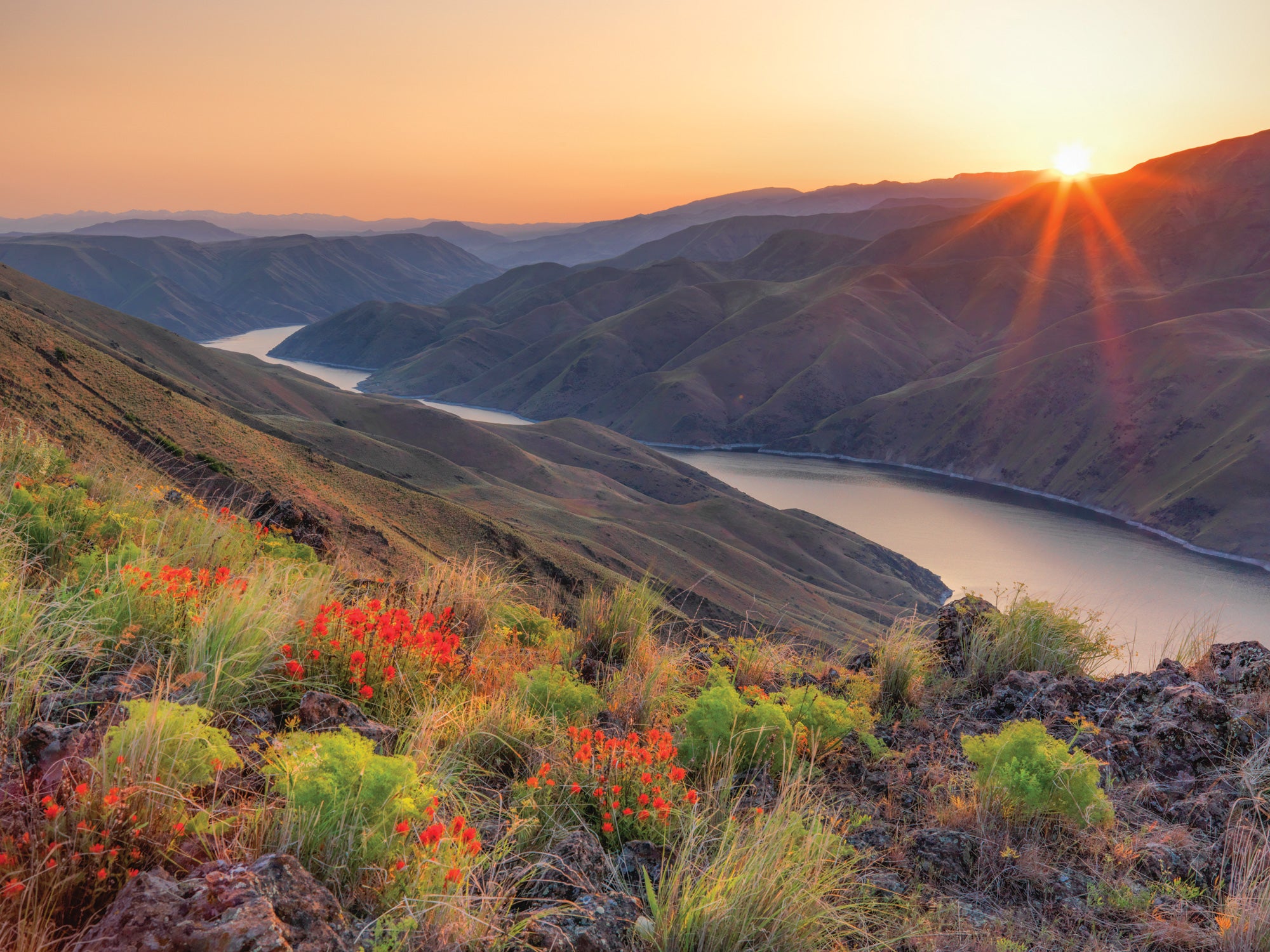Why Hells Canyon is Better Than the Grand Canyon

'Leland Howard'
Twenty minutes ago, staring at the cliffs that soar above the foaming rapids of the Snake River, I wondered how I would ever pass through. But faith and footsteps paid off, and now I’m 500 feet in the air, on a narrow trail blasted out of sheer granite. It’s at this precise moment that it hits me: This is way better than the Grand Canyon.
Fighting words, I know. The Big Ditch is etched in American folklore as the king of canyons, the standard to which all others are compared. Head to the Appalachians, and you’ll find the Grand Canyon of the East (dozens, actually). There’s also the Grand Canyon of Europe, of Africa, and of South America. There’s even a Grand Canyon of Mars. It’s such a cultural fixture that no one questions its preeminence.
But I do. When it comes to canyons, I’m a bit of a connoisseur. I’ve explored some of the deepest, most rugged fissures the world over, from the narrow sandstone slots of southern Utah to the steep marble walls of Taiwan’s Taroko Gorge. None of them match the wild beauty of Hells Canyon, a 100-mile-long defile along the Idaho-Oregon border. No, not even the Grand Canyon.
It starts with solitude—and only gets better. Grand Canyon trails are notoriously crowded. Sure, you can escape the dayhiking hordes by avoiding the corridor routes, but only if you score a permit. Hells Canyon is free of both crowds and quotas. And you know what follows? Wildlife. In lieu of dusty mules that mark the path to the Colorado with steaming piles of poo, in Hells I spy elk, bighorn sheep, and mountain goats tiptoeing along cliff ledges. Black bears, cougars, and wolves are more elusive, but also call the place home.
Water in Hells Canyon isn’t the headache that it is in the Grand Canyon, either. Because mountains surround the place, runoff streams into the chasm year-round. Remember those gallon water jugs you lugged on your last desert trip? Leave ’em at home.
And let’s not forget the tale of the tape. Canyons are defined by depth, and in North America there is none deeper than Hells Canyon. At its lowest, the Snake River sinks an astonishing 7,993 feet beneath the canyon rim, nearly 2,000 feet deeper than the “Grand” Canyon.
Finally, there’s the beauty of the place. I concede this is subjective, but as I climb out of Hells and pull myself onto Suicide Point, the vastness of Hells Canyon unspools before me: Below, the river twists between slopes of colorful wildflowers, hemmed in by jagged cliffs. Seven thousand feet above, the snow-covered peaks of the Seven Devils Mountains look as menacing as the name implies. I am standing in spring, and gazing at winter.
Wilder. Deeper. Lonelier. Prettier. In the end, it’s no contest.
After my hike through Hells, I make a detour to Kirkwood Ranch, a historic residence maintained and staffed year-round by Forest Service volunteers. At the front door, a grizzled man sporting an impressively bushy mustache greets me.
“Got here just in time,” he calls out, striding toward me. “Just finished shaving. You’re the first backpacker I’ve seen all month.”
I smile. “That’s why I’m here.”